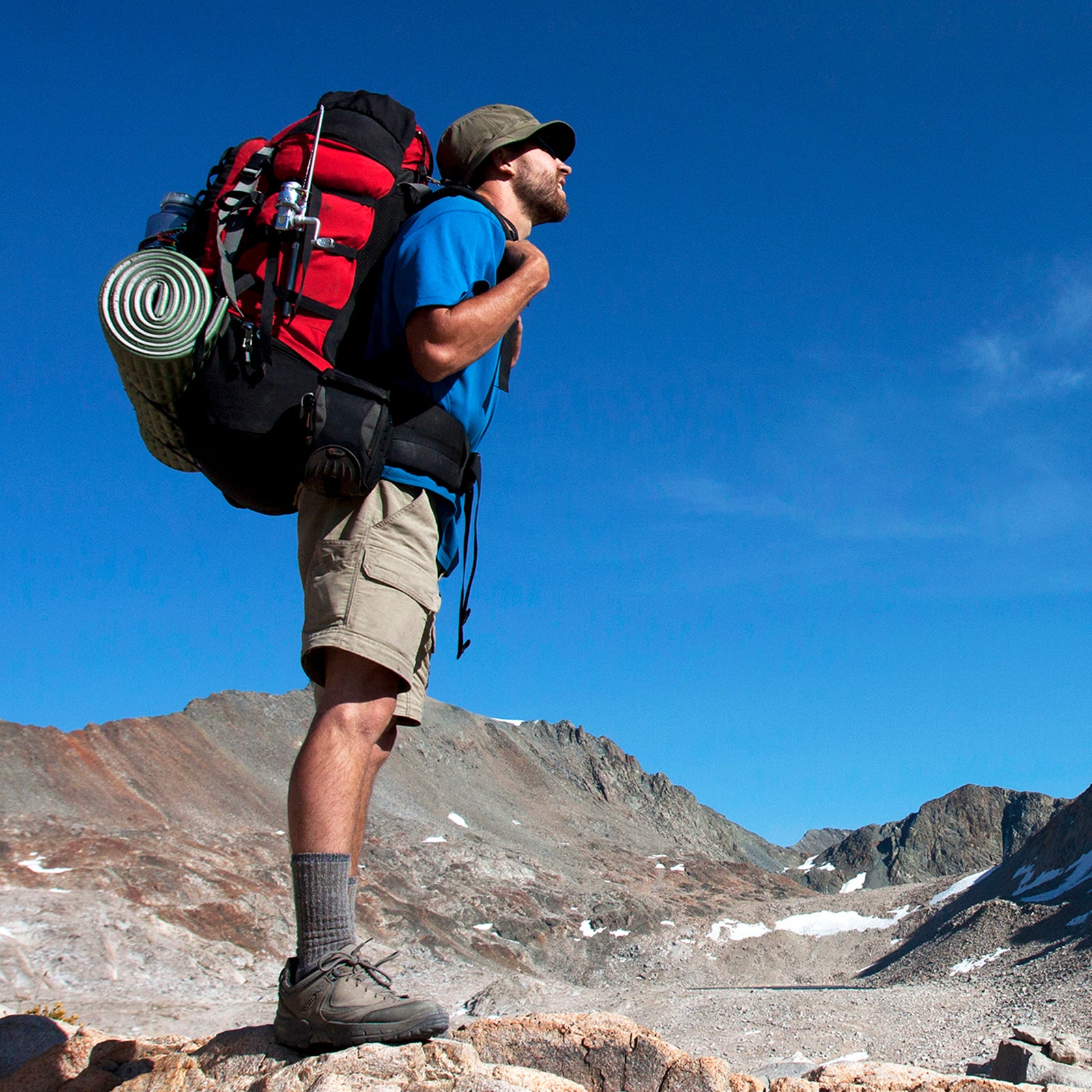Fact: you pack too much stuff when you go on vacation. Unless you’re preparing for multiple seasons or, say, a major expedition, in all likelihood, your luggage is needlessly weighing you down. Luckily, there is one simple trick to traveling without all that unnecessary junk inside your trunk: pack as if you’re carrying your bag on your back for a 2,000-mile hike.��
Thru-hikers are notorious for obsessing over pounds, ounces, and grams when packing for a long-distance backpacking trip. This ultralight craze can also apply to everyday travel. It’s one of the lessons I learned last year from my thru-hike of the Pacific Crest Trail, and ever since applying it to my regular trips, I’ve discovered countless benefits. I zoom in and out of airports. I don’t have to head straight to my lodging so I can drop off my heavy bags. And on the last day of a trip, I’m not digging through a pile of clothing to find that final pair of clean socks at the bottom of my suitcase or discovering that I ended up using only half of what I packed. Plus, traveling light feels liberating and ultimately gives you more flexibility—whether that’s saving valuable time or being able to add a bag for souvenirs without the extra airline charge.
Here are a few tips that anyone can follow to travel like a thru-hiker.
Downsize Your Suitcase
Common sense would tell you to first reduce the number of items you pack, and then reduce the size of your bags based on how much space you need. Common sense is wrong. Experienced backpackers know they will naturally try to make full use of the space they have available. Don’t purchase an 80-liter backpack when a 60-liter backpack will do; you’ll just end up carrying more than you need.��
The same principle applies to travel. If you currently use a checked bag–size suitcase, try packing just a carry-on. If you never need more than a carry-on, see if you can travel with a personal item–size backpack. The best way to lighten your load is to choose a piece of luggage that forces you to pack less.
Less Clothing, More Versatility
Every article of clothing should have a unique purpose yet work in several outfit combinations. A breathable shirt with long sleeves that can roll up that matches both your shorts and your pants? Excellent. A cotton short-sleeve polo and a pair of blue jeans that work only when worn together? Nice, but a waste of valuable space and weight and only effective in a 20-degree temperature range.
One shirt, one pair of pants, a synthetic jacket, and a rain shell kept me comfortable in the Mojave Desert, the snowy Cascade Range, and everything in between. Surely, touring Europe for a month anytime from spring to fall doesn’t require an entire wardrobe.��
Quick-Drying Underwear and Socks
Let’s talk sweaty bits. The seven pairs of underwear and seven pairs of socks I used to pack for a weeklong trip seemed like the only solution for a perspiration-prone traveler like myself. They also seemed to take up half of my suitcase. Breathable, quick-drying clothing makes sweat and stink—whether from the heat of the sun or layering in the cold—a much more manageable problem. On the PCT, I alternated daily between two pairs of quality, odor-proof underwear and two pairs of Darn Tough hiking socks. Now those underwear and socks are the first things I reach for when packing my suitcase, and they weigh next to nothing.��I typically try to launder them once a week, wearing a swimsuit as underwear while they’re in the wash, and then I’m good for another week.��
Of course, if I’m traveling and decide I need a third pair of underwear, it’s usually easy to buy a new pair for cheap just about anywhere. Packing lightweight is partly knowing that if I didn’t pack what I need, I can adapt.
Always Go Smaller If Given the Choice
There are all sorts of ways to downsize when packing. Buying travel-size toiletries is a must. Ditch the bulky toiletry bag for some Ziplocs. A Nalgene is lighter than a metal canteen. Some external batteries are way heavier than others. And unless you think it’s going to seriously storm, consider swapping the heavy-duty rain jacket for a pocket-size poncho. It might seem like small potatoes, but a bag of small potatoes can be quite heavy.
������Ƿɲ�!��
It’s a time-honored thru-hiking tradition. Now that you’ve packed lighter and more efficiently than you thought possible, weigh your luggage on a scale. Next, dump the contents of your luggage on the ground. Pick up one item at a time and ask yourself the following questions:
- “Do I truly need this item where I’m going?”
- “Does this item serve a purpose that nothing else I’ve already packed can do for me?”
- “Is this item that much better than the lighter, smaller version I have sitting in my closet?”
If the answer yes to all three questions, put it back in your bag. If any of the answers are no, rethink your choices. Even better than asking these questions to yourself is finding a skeptical, slightly judgmental friend who will go through your luggage and ask these questions for you.
Once you’ve repacked, weigh your luggage again. Ideally, it’s considerably less heavy than before, and you have the added assurance that you’re adequately prepared. If you try it and prefer the safety of more stuff, that’s okay. There’s no shame in overplanning—I will gladly zip by you at the airport.


